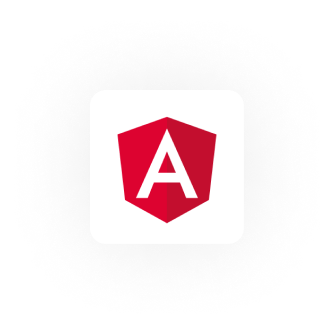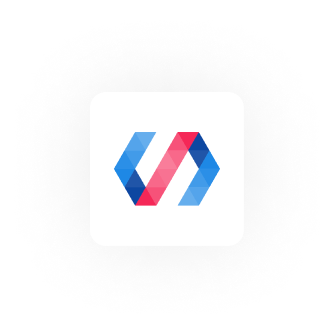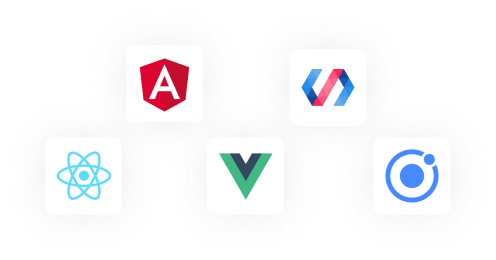PWA Frameworks
Using a PWA framework will make the Progressive Web App development process much easier because it provides developers with a wealth of resources and tools to work with. Therefore, choosing an appropriate one is the first thing you need to consider when you decide to develop a PWA from the start.
There are numerous options available, and the following are some popular of them. However, this article, like others in this PWA Hub, does not delve too deeply into the technology of each framework or how to utilize them.
Instead, it provides a broad overview of each one so that you can still choose even when you’re not a techie.
Contents
What Is A PWA Framework?
The term refers to a supporting structure around which PWA can be built, which is, in this case, a JavaScript framework and other instruments.
Each framework has its own capabilities, the desired feature sets of future applications, as well as its own size, complexity, and scalability expectations.
How To Choose The Best PWA Framework?
With the undeniable value of PWA technologies, by the beginning of 2020, the web ecosystem has already been inundated with dozens of PWAs built on different platforms.
A growing number of PWA frameworks and solutions appear on the market. The first step in any PWA project is to choose a framework, and there are various aspects to consider before making a decision.
Popularity, accompanying documents, support community, performance, and development process details are those deciding factors of a good framework.
Most Popular PWA Frameworks
React – A dynamic ecosystem backed by Facebook

In 2013, Facebook announced an open-source JavaScript library called ReactJS, which was immediately welcomed by the community. ReactJS has grown tremendously quickly and overwhelmed the number of users on the popular version, taking the throne of Angular and Bootstrap.
At present, because of its big JavaScript library and large community worldwide, React is frequently one of the top choices of PWA creators. It has become a first-class citizen in the PWA development sector.
A mature ecosystem with an enormous development community ready to assist in resolving any issue that may emerge is its greatest strength.
Besides, React offers thorough documentation and advanced tools for designing dynamic interfaces. Its create-react-app package allows developers to build their PWA faster with little to no configuration.
The most important reason React could be best for building a PWA is its virtual DOM (Document Object Model). React’s virtual DOM allows you to make UI changes without redrawing the entire page and risking rendering difficulties.
Instead of requiring code-heavy bootstrapping libraries, it allows you to change the page in virtual memory. In addition, the faster rendering speed of React minimizes the time it takes for a page to load.
For these reasons, React is suitable for PWA projects of all sizes. Starbucks and Tinder are among the most typical examples of PWA built with React.
Angular – A mature ecosystem supported by Google

Being created by Google in 2010, it is one of the oldest frameworks in the PWA field. Angular and React are have similarities in terms of popularity, architecture, and JavaScript base.
Mentioning its strengths, Angular is 100% free. Just like React, it also has a strong community that is always enthusiastic about giving support.
Angular makes it simple to design, test, and deploy high-performing apps at any scale, thanks to simple, declarative templates, reusable components, and support for all aspects of the development process.
It enables developers to maintain web infrastructures with ease and comfort without performing tedious and repetitive operations. Also, it’s designed to be modular, with each Angular part being fully interoperable with applications created using other frameworks.
Ahead of Time (AOT) – an Angular compilation mechanism that enables faster and more secure application rendering significantly benefits PWAs created with Angular.
However, working with this powerful tool necessitates solid coding abilities and knowledge of TypeScript, a superset of JavaScript. As a result, some developers find Angular.js challenging to use. Thus, this PWA framework is ideal for large-scale projects.
Ionic – A combination of Angular and Apache Cordova

Ionic Framework is an open-source UI toolkit for creating high-quality mobile and desktop apps utilizing web technologies such as HTML, CSS, and JavaScript, supporting popular frameworks such as Angular, React, and Vue.
It was first introduced in 2013 by Max Lynch, Ben Sperry, and Adam Bradley of Drifty Co. It is built based on Angular components and Apache Cordova to create PWAs using a single language and infrastructure.
Having over 5 million developers globally, Ionic has the best community on Slack, Community Forum, Stack Overflow, and Github, which has over 31,000 stars. With their help and detailed guide provided by the framework, you may clear all your worries when developing a PWA.
With best practices like quick hardware accelerated transitions and touch-optimized gestures, it is meant to run and behave great on the latest mobile devices.
Ionic apps also give a comfortable look and feel on every device, thanks to Adaptive Styling. Cordova plugins make Ionic easy to use native capabilities such as the camera, GPS, etc., to run in the browser as a PWA.
The ionic framework also comes with ready-to-use components such as navigation, caches, sliding menu, pop-ups, etc., equipped with HTML, CSS, and Javascript for customizing design themes and aspects. As a result, developers do not have to create such functionalities from scratch.
The SASS UI provides a wealth of tools for building quick, robust, interactive, native-like apps. Ionic includes some elements of Angular that make it easier to create interactive mobile apps.
Further, it gives you a lot of choices for creating stunning user interfaces with innovative features. It uses native mobile development SDK features and adheres to native application UI principles to create high-performing apps.
Finally, thanks to useful tools such as Stencil – a standalone web component compiler project, and Workbox – a suite of Node.js modules, Ionic successfully optimizes rendering and load performance, streamlines dealing with service workers and cache techniques.
Vue – A new player supported by an international team

Vue.js provides CLI3, a specialized PWA package, to enable developers to ease the process of creating PWAs considerably. Furthermore, Vue.js works in tandem with additional supporting libraries and technologies, such as Nuxt.js, to create a flawless single-page application.
Vue and React share many things in common at their foundation. They’re similar in the usage of virtual DOM to represent the actual DOM in a lightweight and efficient manner. The difference is that Vue embraces and builds on established web technologies such as HTML and CSS. Whereas, React takes a more advanced approach, relying primarily on JavaScript.
Because of this, frontend newbies may find it easier to learn and develop PWAs in Vue. The Vue learning curve is more forgiving for newcomers.
More Options
Polymer – Another PWA framework from Google

Polymer is an open-source JS toolkit built-in HTML and JavaScript created by Google. Currently, it is deployed in a number of its products, including the Google I/O webpages, Google Earth, Play Music, and others.
The Polymer library is gaining popularity among programmers. So far, it has received over 22,000 GitHub stars and over 31,000 npm downloads.
It provides a large number of tools, web components, and templates to choose from. Because the operating aspect is much simplified, it is a suitable option for PWA development.
Furthermore, Polymer’s tools and components are compatible with a wide range of browsers, making Polymer apps adaptable and accessible.
More importantly, Polymer allows users to generate their own HTML components, such as themes, then combine them into web apps. As a result, source code does not need to be modified to meet the designers’ requirements.
PWA Builder – Developed by Microsoft

It is a Microsoft tool for quickly and easily transforming websites into cross-platform PWAs built with Vue.js and Node.js.
PWA Builder 2.0, which was just published, now has official support for the WebKit-based Mac desktop platform. The framework promises to make PWAs be able to access Microsoft Store and Mac.
The biggest strength of PWA Builder is its extensive documentation as being backed by a tech giant.
Webpack Module Bundler

It is an open-source module bundler for JavaScript that is suitable for experienced developers.
It is the greatest tool for adding offline experience to a PWA by creating dependency graphs between JavaScript files such as fonts and pictures to minimize dependency management. This results in fewer server requests and faster loading of static items.
Preact

Preact is a lightweight, performance-oriented alternative to React that’s great for PWA development because it’s light, fast, and should cover the majority of your requirements.
It’s entirely compatible with React, and switching from React to Preact is as simple.
Svelte

Being introduced in 2019, Svelte – a component-based framework is still in its infancy. It’s comparable to Vue and React in many aspects, but it’s also fundamentally different from a “fully reactive framework.”
With the introduction of Svelte 3, the framework is now announcing that it will be branching out into programming languages.
It was created in reaction to React’s flaws, for example, reducing the project budget.
In Brief
As previously stated, picking the right framework for your PWA project is the first and often most important step. It decides how responsive, scalable, interactive, robust, and user-friendly your PWA will be.
However, PWA frameworks are rapidly growing and increasing, with new releases every few months. As a result, asking for advice from a PWA developer is still recommended to get the best outcome.
